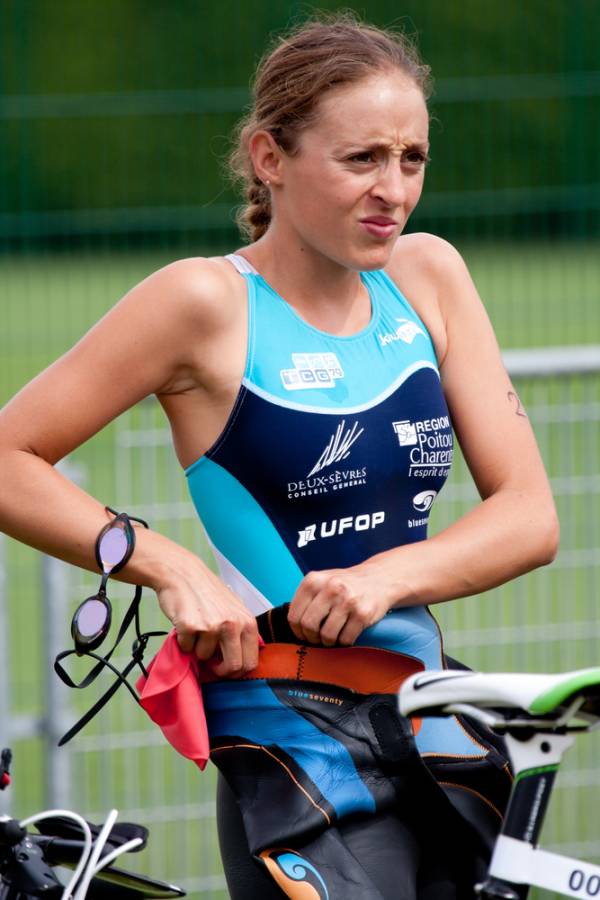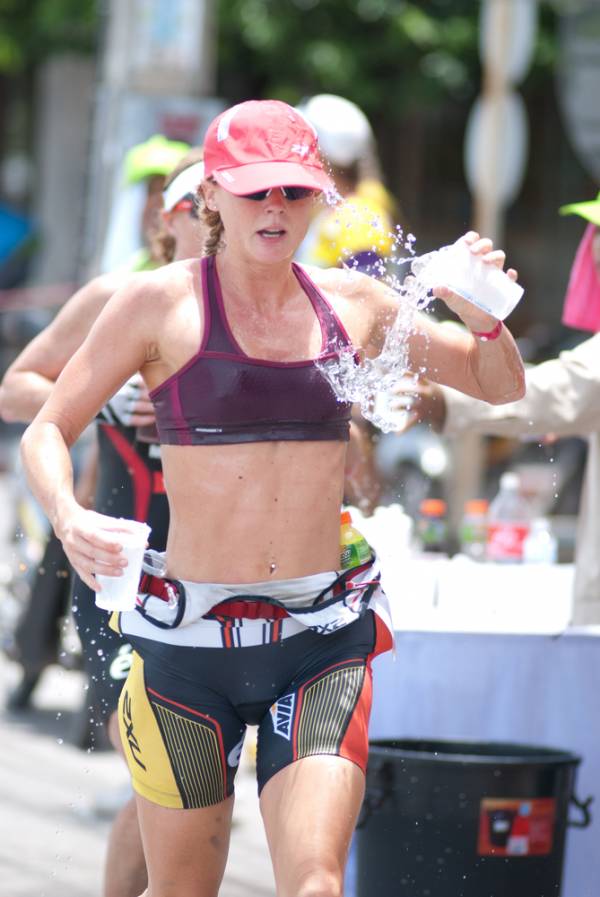A great way to beat a training rut and burn more calories is to change things up. Triathlon training is an effective way to beat workout boredom and train different muscles because you are including three different disciplines into your routine. Swimming, cycling, and running offer your body a total body workout that is sure to help you burn calories and shed the weight. And because you have three options for training, you are less likely to skip a workout, thus increasing your overall calorie burn.
Triathlon is a sport that combines three separate disciplines, which means the training sessions need to be able to incorporate more than one event. Two of the main focuses of triathlon training are the long runs and rides and the brick workout. I would like to talk about the brick workout, as it is one of the most overlooked parts of training for a triathlon, yet puts the most stress on your body.
A brick workout refers to the stacking of two disciplines during the same workout, one after the other with minimal to no interruption in between. As you switch modes of exercise, your body needs to effectively and efficiently prepare for the next demand while recovering from the previous exercise demand. Your heart rate increases significantly as your body tries to shift the blood flow from the muscles of the first exercise to the demands of the muscles of the next. Brick workouts help your body handle the aerobic, anaerobic, and muscular demands of a triathlon event.
 For the triathlete, the most obvious reason to brick train is that this routine follows the specificity principle of training. You do not compete in each phase of the race in isolation. The transition is almost a fourth discipline. You need to train accordingly and practice these transitions from one exercise to another within your training regimen. For the non-triathlete, this style of training is a great way to increase your calorie burn. You can burn close to fifteen calories per minute based on a vigorous effort on both the cycling and the running ends of the workout.1
For the triathlete, the most obvious reason to brick train is that this routine follows the specificity principle of training. You do not compete in each phase of the race in isolation. The transition is almost a fourth discipline. You need to train accordingly and practice these transitions from one exercise to another within your training regimen. For the non-triathlete, this style of training is a great way to increase your calorie burn. You can burn close to fifteen calories per minute based on a vigorous effort on both the cycling and the running ends of the workout.1
Generally, a brick workout consists of a bike/run workout, but a brick could also be a swim/bike or a run/bike workout (usually seen with duathletes). I am going to focus on the bike/run. Here are my guidelines:
- Before you begin a brick style workout, you should already be able to do the bike and ride distances planned for your brick.
- When you design your brick workout, the distances you choose should be equivalent to where you are at in your training program.
- If you are building a base or are only focused on losing weight, you should keep your distances shorter and to multiple repeats.
- If you have never tried a brick workout, you should start off with just a 1 mile walk/ jog after biking.
Here is an example of a shorter distance bike/run bricks:
5 mile bike; 1 mile run- repeat four times.
When you are in your building or peak phase, you should be increasing the distance in the respective disciplines and begin to approach race intensity. Your bikes will become much longer and your runs will steadily climb. You will no longer focus on repeats, but look at how long you have to get a workout in. If I have two hours to myself on a Saturday, I will bike for 1.5 hours and run for 30 minutes. As the length of your workout starts to increase, I would recommend breaking it down not by distance, but by time.
You should not plan on scheduling a brick workout too close to a planned race or sporting event, as they can be pretty tough on the body. How often can you do this type of training? You should consider your experience level, your schedule, your body’s response, and how susceptible you are to injury. They are usually performed once a week, sometimes every other week.
 When you stop biking and start running your legs may feel heavy and a bit strange. This heavy feeling in your legs, in my opinion, is why it is referred to as a brick workout. It will feel like you are carrying two cement blocks on the ends of your legs. As you begin the run, focus on making yourself do it, one leg over the other. As your body gets used to the change in demand, you will develop a rhythm.
When you stop biking and start running your legs may feel heavy and a bit strange. This heavy feeling in your legs, in my opinion, is why it is referred to as a brick workout. It will feel like you are carrying two cement blocks on the ends of your legs. As you begin the run, focus on making yourself do it, one leg over the other. As your body gets used to the change in demand, you will develop a rhythm.
Whether you are doing a multiple repeat style workout or a long duration bike/ ride, keep your time in transition as minimal as possible. This is the key to this type of workout. You need to listen to your body, however, and slow down if you feel a cramp during the initial stages of the second exercise. It is not uncommon to experience cramps when you begin using the style of training. As your body adapts, they should subside.
Sources:
1. 2011 Compendium of Physical Activities
2. Fitzgerald, Matt. (2003). Complete Triathlon Book. New York, NY: Warner Books. p 99-100.






